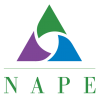During the extensive welfare reforms of 1996, President Clinton passed the Personal Responsibility and Work Opportunity Reconciliation Act. This Act mandated the creation of the Temporary Assistance for Needy Families (TANF) federal assistance programs. TANF is a block grant funding program provided to states, territories, and tribes to help them make welfare a temporary assistance program by moving welfare recipients to work.
According to the Department of Health and Human Services (HHS), which administers TANF, the four main purposes of the program are:
Assisting needy families so that children can be cared for in their own homes;
- Reducing the dependency of needy parents by promoting job preparation, work, and marriage;
- Preventing out-of-wedlock pregnancies; and
- Encouraging the formation and maintenance of two-parent families.
HHS attempts to achieve these goals in part by imposing a 60-month limit on the amount of time one can receive TANF benefits over a lifetime and by forcing recipients to find a job within a year of receiving aid. Additionally, states are given a substantial amount of flexibility and discretion to structure their own unique welfare programs and to distribute TANF funds to recipients.
Why Is This Important to NAPE?
TANF is an important safety net for families and children in poverty. Under this $16.5 billion block grant program, states have broad flexibility to design programs that promote work in order to strengthen families and help them become self-sufficient. It is a key program through which low-income individuals can find and retain jobs in order to sustain themselves and their families. TANF also aims to reduce childhood poverty. Additionally, TANF programs complement and work alongside those mandated by the Workforce Investment Act. Both Acts help to provide substantial income and employment aid to the poor and unemployed.
Current Status
July 2013: TANF has been pending reauthorization since 2010. Legislators have prolonged TANF through a stream of short-term (usually 3-month-long) block grant extensions, with the most recent one ending on September 30, 2013. These short-term extensions make it very difficult for state legislators and policymakers to operate adequately and to address issues of poverty. To date, no state has submitted a TANF waiver application (see July 2012, below) because of uncertainty about legislative action related to the program.
February 28, 2013: The Subcommittee on Human Resources of the House Ways and Means Committee held a hearing on Waiving Work Requirements in the TANF Program. The hearing was called in response to an HHS announcement last July that it was willing to grant states waivers to apply different work rules than the rules specified in the TANF statute to allow states to test alternative approaches that might be more effective in improving employment outcomes for TANF recipients.
July 2012: To offset restrictions that make it difficult for states to help TANF recipients to find jobs, HHS announced that states could apply for TANF waivers. Waivers offer states more flexibility to develop “alternative and innovative strategies” to combat poverty and to help “parents successfully prepare for, find, and retain employment.” To be granted a waiver, a state must develop and submit a plan for a demonstration project that promotes employment entry, retention, and advancement. Although a waiver exempts a state from existing work participation standards, the state is still required to meet the goals and intent of the 1996 welfare reform.
February 17, 2012: The Middle Class Tax Relief and Job Creation Act of 2012 (H.R. 3630), which included TANF, passed the House and Senate. President Obama signed the bill into law February 22, 2012. However, the extension legislation had problematic funding and issues for TANF. Learn more from Legal Momentum
Necessary Action
It is imperative for TANF reform and reauthorization to occur in order to help states address poverty issues promptly and effectively. TANF provides an important safety net for families in poverty and must contain provisions that support building both financial and educational assets leading to economic self-sufficiency. Because the program has been due for reauthorization since 2010, NAPE urges Congress to reauthorize TANF to strengthen provisions related to financial and education assets to help states to adequately address poverty issues. For more information on NAPE’s recommendations for legislative action, please visit NAPE’s Public Policy Agenda.
Resources and Publications
- Center for Law and Social Policy: TANF Reauthorization
- Legal Momentum: TANF Information
- National Skills Coalition: TANF webpage
- U.S. Department of Health and Human Resources: TANF webpage
- Goals for TANF Reauthorization (CLASP, February 2013)
- Policy Basics: An Introduction to TANF (Center for Budget and Policy Priorities, July 2011)
- Serving TANF and Low-Income Populations through WIA One-Stop Centers (Abt Associates Inc., 2004)
- TANF Tested: Lives of Families in Poverty during the Recession (NETWORK, A National Catholic Social Justice Lobby, 3Q 2010)
- Training Policies in Brief: Temporary Assistance for Needy Families (National Skills Coalition, February 2011)
